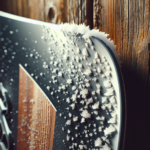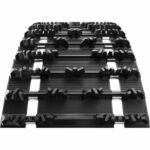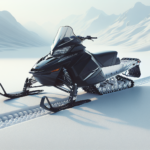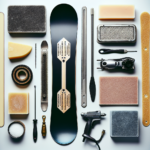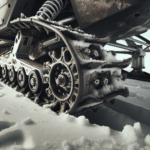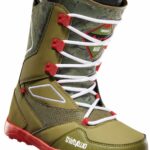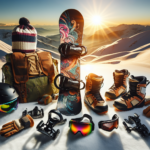Have you been pondering over the queries – “Do you sharpen a snowboard?” Well, guess what? You’re on the right track. This article is all about shedding light on this very question. Not only will it give you a comprehensive and straightforward answer, but it will also provide you a detailed rationale behind it. So, stick around and broaden your horizon with this perfect guide for all snowboard enthusiasts and novices alike.
Understanding the Importance of Snowboard Sharpening
Keeping your snowboard in good condition is crucial if you want to enhance your snowboarding experience, and one of the key aspects of maintenance is sharpening your snowboard edges. But why is it so important and how does it impact your performance on the slopes? Let’s find out.
The role of snowboard edges
The edges of your snowboard are not just physical ends; they play a decisive role in your snowboarding performance. Your edges dig into the snow and provide you with control, stability and speed. Whether it’s carving down the mountain, stopping quickly, or fine-tuning your rides on icy slopes, sharp and well-maintained edges allow you to execute your moves flawlessly.
Impact of unsharpened snowboard on performance
An unsharpened snowboard can alter your performance drastically. It can make your board sluggish and make it more challenging to execute turns and moves. The compromise in precision can greatly reduce your control on both hard-packed and icy surfaces, rendering your snowboard less effective.
Safety considerations
Apart from performance, an unsharpened or dull snowboard also raises safety concerns. Less control over the board could lead to accidents, especially at high speeds or difficult terrains. In contrast, a well-sharpened board helps ensure you have the grip and control necessary to keep you safe while you enjoy your time on the slopes.
Indications that Your Snowboard Needs Sharpening
Recognizing the time to sharpen your snowboard is a crucial aspect of snowboard maintenance. Here are a few clear indicators that your board might need a tune-up.
Visible signs of wear and tear
The first and most obvious sign is visible wear and tear on the edges. If they look dull, rusted, or have any nicks or burrs, it’s likely time to sharpen them.
Changes in snowboarding performance
If you suddenly find your snowboard harder to control, not holding an edge as well, or if you find yourself sliding out more than usual, your edges might need sharpening.
Handling difficulties
Struggling to handle your snowboard? If you’re finding it difficult to carve turns, stop, or ride smoothly, it could be a sign that your snowboard edges are too dull.
Factors Affecting Snowboard’s Sharpness
Several factors can affect the sharpness of your snowboard’s edges, and being aware of them can help you maintain your board more effectively.
Frequency of usage
The more you use your snowboard, the faster its edges will dull. The friction against the snow wears down the edges, resulting in the necessity for more frequent sharpening.
Snow and terrain conditions
The type of snow and terrain you ride also plays a big role. Hard, icy conditions can dull the edges faster than soft, powdery snow. Similarly, riding on rocky terrain can lead to nicks and dents on your edges that require sharpening.
Quality of your snowboard material
The material and quality of your snowboard also matter. Higher quality materials will hold an edge longer, while cheaper or less durable materials may require frequent sharpening.
Tools Required for Snowboard Sharpening
Getting your edges sharp again requires the right tools. Here are the main tools you’ll need for effective snowboard sharpening.
Edge tuner
This is a device that allows you to accurately set the angle of your snowboard’s edges for sharpening.
Diamond stone
A diamond stone is used for polishing the edges and removing small burrs.
Gummy stone
A gummy stone is used for removing rust and cleaning up the edges after sharpening.
File guide
A file guide helps you maintain the correct angle while sharpening and prevents you from damaging your board’s edges.
Step-by-Step Guide to Sharpen Your Snowboard Edges
Once you’ve got your tools ready, it’s time to get down to business. Here’s a basic step-by-step guide to sharpening your snowboard edges.
Preparing your workspace
Start by setting up a clean, well-lit workspace where you can comfortably work on your snowboard. Make sure to secure your board to prevent it from moving during the sharpening process.
Determining the edge angle
Before you start sharpening, you need to determine the correct edge angle for your snowboard. This varies according to your board and riding style.
Using the edge tuner
Using your determined angle, hold your edge tuner against the edge and start filing, moving from tip to tail.
Polishing with a diamond stone
After you’ve finished with the edge tuner, use a diamond stone to polish the edges and remove any burrs left by the file.
Precautions to take during Snowboard Sharpening
Sharpening your snowboard isn’t without risk. Here are some precautions to take to ensure you’re sharpening safely and effectively.
Avoiding over-sharpening
You want your edges sharp, but not too sharp. Over-sharpening can weaken your edges and make them vulnerable to damage.
Ensure correct edge angle
Getting the correct edge angle is crucial for proper performance. A wrong angle could affect your control and the overall feel of your ride.
Using tools correctly
Improper use of the tools can damage your edges or potentially harm you. Make sure to read the instructions carefully and use the tools as intended.
Personal safety measures
Always protect your hands and eyes when sharpening your edges. Work slowly and carefully to avoid any accidents.
Care and Maintenance to Keep Your Snowboard Sharp
In addition to sharpening, here are some tips for ongoing care and maintenance that can help keep your snowboard sharp.
Regular inspection
Regular checks for dings, rust, and dull edges can help you keep your snowboard in peak condition.
Proper storage
When you’re not using your snowboard, store it in a cool, dry place to avoid damage and rust.
Periodic professional servicing
While regular home care is great, getting your snowboard professionally serviced and tuned now and then can help ensure it stays in top shape.
Frequently Asked Questions about Snowboard Sharpening
Let’s cover some typical questions that most snowboarders have about sharpening.
How often should I sharpen my snowboard?
The frequency of sharpening depends on the various factors – intensity of riding, snow conditions, and your snowboard quality. However, as a standard guide, try to look into this every three to seven days of riding.
Can sharpening affect my snowboard’s lifespan?
Yes, it can, but in a positive way. Regular sharpening helps maintain your snowboard’s performance and can prolong its lifespan. Over-sharpening, however, can damage your board and reduce its lifespan.
Do all snowboards need sharpening?
Yes, all snowboards benefit from having sharp edges, especially when carving turns and for more control on hard-packed snow or ice.
Sharpening Snowboard Edges versus Professional Servicing
When it comes to getting your edges sharp, there are two major options – self-sharpening or professional servicing.
The benefits of self-sharpening
Self-sharpening gives you full control over your snowboard’s maintenance. It’s cost-effective over time and keeps you intimately familiar with your snowboard condition.
When to seek professional help
Professional servicing can be useful if you’re unsure about getting the right edge angle or if your snowboard has serious nicks or dents that you’re uncomfortable handling yourself. It’s also helpful at the start of the season for a full tune-up.
Comparing costs and convenience
While you might have to invest in tools for self-sharpening, eventually, it can be more cost-effective than professional servicing. However, professional servicing can save you time and hassle.
Efficient Techniques for Snowboard Sharpening
Lastly, let’s take a look at some efficient techniques for snowboard sharpening that can make the process smoother.
Direction of sharpening
For the best results, always sharpen your snowboard in one direction – from the tip to the tail.
Balancing pressure
Balancing the right pressure while sharpening is important. You want to apply enough pressure to sharpen the edges, but not so much that you damage the edges or tire yourself out.
Focusing on the contact points
The contact points of the board – where the board’s edge makes contact with the snow – are most crucial. You should spend a bit more time working on these parts.
In conclusion, maintaining the sharpness of your snowboard edges is a crucial aspect of overall snowboard care. By understanding the process, obtaining the right tools, and practicing the efficient techniques, you could drastically improve your snowboarding performance. So, take the time and effort to regularly sharpen your snowboard and make the most of your time on the slopes!
- What Snowboard Bindings Should I Get? - January 23, 2024
- What Size Screws For Snowboard Bindings? - January 23, 2024
- How To Snowmobile On Water? - January 23, 2024




